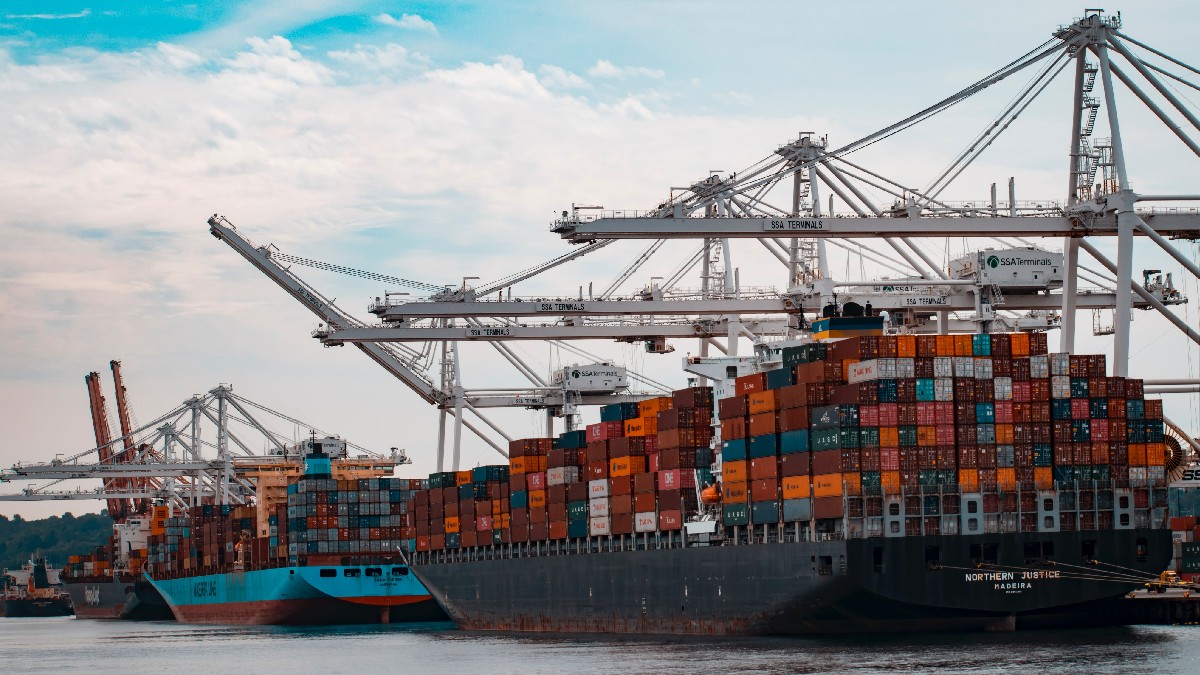4 things your freight forwarder should be doing for you
Scroll to find out more
Scroll to find out more

With disruption at every corner, it is not good enough to provide purely transactional freight forwarding services. If you can’t see why cargo has been delayed, or where your supply chain is holding you back from achieving business goals, how can you know where to make improvements or what to tell an internal stakeholder?
To target these issues, you need a freight forwarder that aligns itself with your values, helps you to plan for the unexpected and targets problem areas in your supply chain to improve efficiency. Here is how a freight forwarder should be providing this:
Finding a freight forwarder that offers the right space at the right price as well as getting your cargo to its end destination without errors is essential. Maintaining efficiency and improving performance can only be achieved when there are minimal errors throughout your cargo’s journey. That means your freight forwarder should offer a minimal-error service, leaving you to focus on achieving business goals.
When there are problems, they should be automatically flagged so that you can act quickly to minimise delays. For example, at-risk SKUs should be highlighted so you can problem-solve internally and with your freight forwarder, such as by diverting your cargo or rethinking what products to promote. A platform with automated exception management rules can make this whole process faster, while cutting down on human error. By highlighting issues speedily, you can plan, prepare and react to market volatility and problems that could affect your customer’s experience.
Most freight forwarders have a basic platform, but many of them have limited capabilities. Modern freight forwarders should be providing you with a platform that does more than allow you to make bookings and track cargo status manually. Your platform should be able to provide you with information that helps you to improve your supply chain by accessing end-to-end visibility, such as:
By being able to know where your cargo is from order creation to delivery, you can see where delays routinely occur and which suppliers are causing issues. Knowing that allows you to investigate further and identify where to make changes that can improve efficiency, reduce costs and achieve your business goals, such as reducing carbon emissions.
Full visibility of your supply chain at purchase order and SKU level, as well as of shipments, not only allows you to track progress but can also help with problem-solving, scenario planning, and KPI reporting to improve communication with internal stakeholders. For example, the manufacturer may have taken longer to fulfil the order than expected, which could cause significant delays. By having visibility at SKU level, you can let internal teams know about product delays and form an alternative plan, such as advertising a different product while you wait for the other.
But visibility isn’t the only thing a good platform can provide. For example, your freight forwarders platform should:
Understanding how you can navigate through disruption to minimise delays is paramount. Experts can provide you with insights into current market volatility and potential future disruption, offering you bespoke solutions to these problems through scenario planning. For example, the new customs declarations for moving goods into the UK from the EU require a lot of planning to move goods across the border compliantly, without slowing down. Preparing a plan with specialists on how you can mitigate the new custom declarations without disruption to your business can reduce delays and get you through the border quicker.
Guides on issues such as Brexit, communications on current topics such as the Suez Canal blockage and updates on port closures, congestion or changes in the market should also be provided by your freight forwarder. These assets can help you to prepare your supply chain for disruption and plan alternative routes.
To know if you are going in the right direction, your freight forwarder needs to be able to benchmark where you’re at. By having a point of reference, you can keep track of the developments you are making and whether they are improving your supply chain. For example, you may want to improve container utilisation from each container being 80% full on average, to being around 90% full on average. This is far more straightforward for you to achieve when you can easily track the data that shows whether you have improved or not.
When going out for tender, it is important to consider whether a freight forwarder’s tools and experts are right for your business goals. A freight forwarder should be working with you to improve visibility, agility and collaboration to make your supply chain your competitive advantage. Take a look at our checklist for measuring a freight forwarders value and how you can rate their responses when going out to tender.
If you would like to find out how you can improve the visibility of your supply chain, lower costs and achieve business goals, get in touch with our experts.

In Focus: An update on U.S. tariffs The de minimis exemption for Chinese and Ho...

In Focus: Tariff turbulence continues to disrupt Escalation in U.S. tariff poli...
